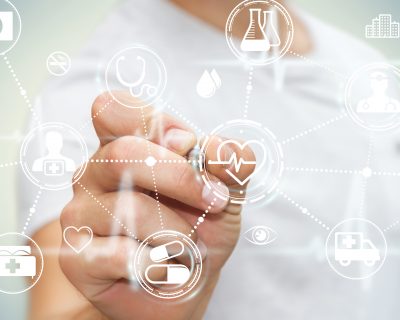Site
Select your branch
A Digital-First Approach to Tackling Coronavirus
As technology and medicine become more entwined, it has become clear that at some point — in the near future — digital health will dominate healthcare. What this means specifically will be difficult to define, because digital practices will take innumerable forms. Generally though, it simply means that we will begin to depend more and more on technology for everything from diagnostic processes to highly complex medical procedures.
On our way to this digital health future though, we have now been confronted with perhaps the most severe medical crisis in modern history. The coronavirus outbreak has now affected most of the world, and the scale of the consequences, while unknown, is daunting. As healthcare systems around the world work to combat the virus, the progress toward digital health may actually be accelerating. We’re now seeing tech-based methods of fighting the virus, and we may well see all of this lead toward more digital preventative methods in the future.
The Digital Battle Against COVID-19
Telemedicine
In the current battle against COVID-19, the primary way in which digital healthcare is making an impact is through the adoption of telemedicine. With hospitals overwhelmed and people around the world sheltering in place to avoid contracting the virus, telemedicine is being used on the frontlines as a means of helping providers and patients to communicate. And while a teleconference doesn’t have the full range of benefits of an in-person visit, it does provide a safe, convenient method for patients to ask questions and for providers to assess symptoms or concerns. Some believe that the COVID-19 crisis is effectively proving the efficacy of telemedicine.
Equipment Production
We don’t typically think of digital health as having to do with production. However, there are some software-driven manufacturing methods that do in fact hold enormous potential for the future of medical device production. And right now we’re beginning to see some of those methods put into action. Case in point, in areas in which there is a shortage of life-saving ventilators for COVID-19 patients, 3D printing is enabling ventilator splitting — rapidly producing small attachments that can potentially enable these devices to help multiple patients at the same time. And that’s to say nothing of widespread initiatives using similar methods to create more masks and other protective gear for healthcare workers. Examples include:
- https://www.wired.com/story/a-disease-tracker-backed-by-gates-and-zuckerberg-tackles-covid-19/
- https://www.digitalhealth.net/2020/03/nhsx-coronavirus-contact-tracking-app/
- https://www.wired.com/story/wearable-covid-19-symptoms-research/
- Oura ring which tracks temperature changes accurately that can predict fever before symptoms: https://www.youtube.com/watch?v=-50ikEZ009o
Digital Prevention in the Aftermath
Implants & Wearables
The coronavirus outbreak is likely to alter how we approach preventative medicine in the future, at least to some extent. And in this regard digital health has already progressed fairly significantly though the development of high-tech wearables and even implanted monitors. This has required innovative design. Internally, these devices have significant demands despite small sizes; so, designs for multi-board printed circuit boards [PCBs] and similarly condensed electronic processors have helped to give them the capability they need. A dense yet powerful PCB of this nature can house all the components needed for complex electronic functions, and can be fitted into tiny, and in some cases implantable new devices. All of this has given healthcare providers and patients alike new windows into bodily health — and it’s conceivable that similar devices could be augmented to watch for early signs of viruses. We’re not there yet, but in the future this sort of development could help us to spot potential outbreaks more quickly.
Monitoring Pandemic Potential
Small health monitors may one day help individuals and healthcare providers to head off worrisome symptoms early in the process. On a larger scale, however, digital health may also come to involve data-driven AI analysis. In fact, in considering how AI could help with the next pandemic, it’s important to note that it could perhaps have guided governments to minimise the escalation of COVID-19 to a global pandemic. For example, BlueDot, a company that is equipped to monitor infectious disease outbreaks around the world actually spotted an uptick in pneumonia in Wuhan before the WHO formally identified COVID-19. This raises understandable concerns about privacy. But from a technological perspective, we may in fact already have better capability to monitor potential pandemics but have not yet invested the resources or prepared the policies required. .
At this point it’s clear that the coronavirus outbreak has gone beyond the preparedness of many governments and the solutions any one technological innovation could offer. As we begin to see technology playing a role in fighting back, however — and possibly preparing us for the next one — we may be getting a glimpse of the future of digital healthcare.


